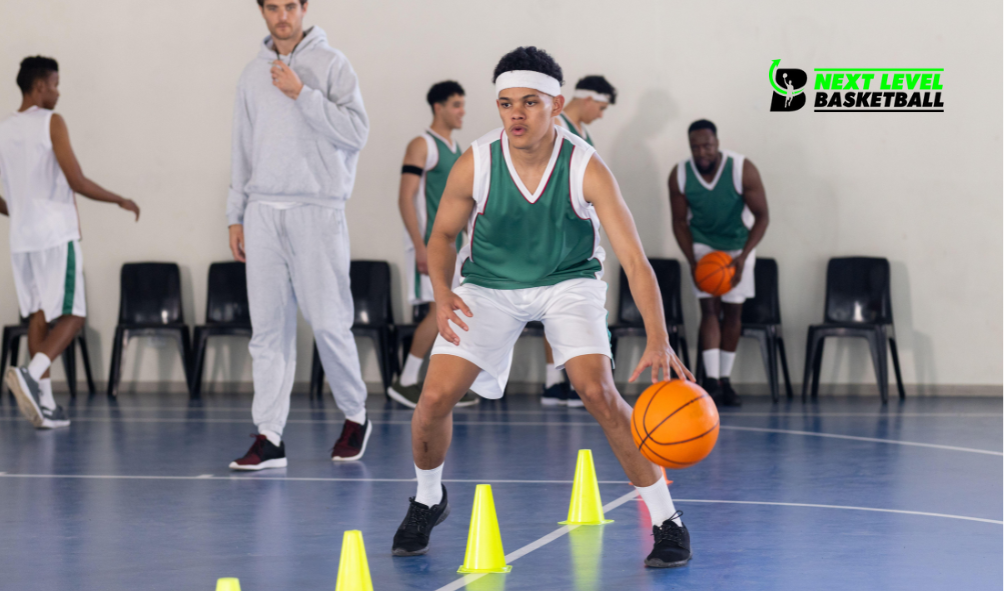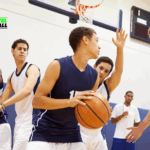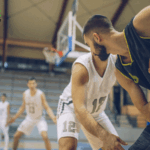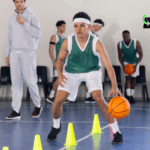Essential Ball Handling Skills for Improved Control and Agility
Ball handling is one of the most important skills you need to play basketball well. It lets you move the ball with control, avoid defenders, and create chances to score or help your teammates. Mastering good ball handling techniques builds your confidence and makes you a more effective player on the court.
To get better, you need to practice both the basics, like dribbling with each hand and keeping your head up, and more advanced moves that help you change direction quickly. Improving your ball control takes consistent practice, but it pays off by making your actions smoother and faster during games.
When you use these skills well, you can keep the ball safe under pressure and make smart decisions on when to pass, shoot, or drive. This helps your team perform better and keeps the game under your control.
Fundamental Ball Handling Skills
Learning to handle the ball well means mastering body position, controlling the ball while moving, and training your coordination. These points help you protect the ball, move smoothly, and react fast under pressure.
Stance and Grip
Your stance sets the base for good ball control. Keep your feet shoulder-width apart and knees bent slightly. This low, balanced position helps you stay quick and ready to move in any direction. When you hold the ball, use your fingertips, not your palm. This grip gives you better control and quicker reactions. Keep your hand relaxed but firm so the ball doesn’t slip. Stay on the balls of your feet, with your weight slightly forward. This makes it easier to change direction fast and keep your dribble low and protected from defenders.
Dribbling Basics
Dribbling means bouncing the ball with one hand while moving. Start by keeping the ball waist high or lower to protect it from opponents.
- Use your fingers to push the ball down, not your palm. This gives you more control and helps you change speed or direction quickly.
- Practice dribbling with both hands. Strong control with your non-dominant hand makes you harder to guard and opens more options during the game.
- Keep your eyes up while dribbling. This allows you to see the court, teammates, and opponents without losing control of the ball.
Hand-Eye Coordination
Hand-eye coordination helps you dribble, pass, and catch with accuracy. To improve this, practice simple drills like dribbling two balls at once or passing against a wall. Focus on the ball’s movement and your hand’s reaction time. The quicker you see and respond to the ball’s position, the better your control. Train with varied speeds and angles. This builds your ability to adjust quickly during a game while keeping the ball under control.
Developing good coordination will help you make smarter decisions and perform moves smoothly under pressure.
Advanced Dribbling Techniques
These dribbling moves help you control the ball better and create space from your defender. They are key to making quick decisions and keeping your opponents off balance.
Crossover Dribble
The crossover dribble quickly switches the ball from one hand to the other in front of your body. This move is useful to change direction fast and confuse defenders. To do it well, keep your dribble low and close to the ground. Use your eyes and body to fake one way before crossing over to the other. This can open up space for a drive or a shot.
Timing is important. A well-timed crossover forces the defender to react late, giving you an advantage. Practice both hands to be effective on either side.
Behind-the-Back Dribble
This dribble lets you protect the ball while changing direction. You move the ball behind your body to keep it away from defenders.
Start by dribbling with one hand, then quickly move the ball behind your back to the other hand. Keep your body low and eyes up to watch defenders. This move helps you escape pressure and maintain control when defenders close in. It’s also great for changing speed smoothly without losing the ball.
Practice this dribble until you can do it fluidly and without looking at the ball.
Spin Move
The spin move is a full 360-degree turn used to get past defenders. You use your body to shield the ball while spinning.
Begin by dribbling toward the defender. Plant your foot and turn your body quickly while keeping the ball close. Use your off-arm to protect the ball from being stolen. The spin disrupts the defender’s position and opens up a path for a drive or pass. Control is key; keep your dribble tight and balanced through the turn. This move works best when used suddenly to surprise the defender.
Hesitation Dribble
The hesitation dribble fakes a stop to slow the defender down. You pause your dribble just enough to trick the defender into thinking you will not move. To execute it, slow your dribble and body movement for a moment while keeping control. Then explode forward with a quick burst using the same hand. This change of speed can make defenders shift their balance. It gives you the chance to drive past them or create space for a shot.
Practice the hesitation in different ways to avoid becoming predictable.
Improving Ball Control
Controlling the basketball well takes focus and practice. You need to use both hands, practice specific drills, and protect the ball from defenders. Doing these things helps you keep possession and make better plays.
Weak Hand Development
Using your weak hand is crucial for better ball control. You should practice dribbling and shooting with this hand every day. Start with simple dribbling drills, like stationary dribbles, moving side to side, and low dribbles.
Use a wall or a chair to challenge your weak hand by bouncing the ball without looking. This helps build coordination and confidence. The more you practice, the more natural handling the ball with your weak hand will feel, making it harder for defenders to predict your moves.
Ball Handling Drills
Drills are the best way to improve your ball handling. Use drills like two-ball dribbling, where you dribble two basketballs at once to work both hands equally. This enhances coordination and hand speed.
Also, practice cone drills by dribbling around cones or markers to improve your control while moving. Change speeds and directions to simulate real game pressure. Focus on keeping your head up during these drills, so you stay aware of defenders and teammates.
Minimizing Turnovers
To reduce turnovers, keep your dribble low and protect the ball with your body. Use your off-hand as a shield when dribbling. Always stay calm and avoid rushing your moves.
Work on your passing skills to avoid bad passes that lead to turnovers. Practice different types of passes under pressure to build accuracy. By improving your control and decision-making, you’ll keep possession longer and help your team more effectively.
Application in Game Situations
You need to use your ball handling skills to solve real problems on the court. This means controlling the ball well to get past defenders, making room for shots or passes, and moving quickly during fast breaks. Each skill helps you make better decisions and keeps your team in control.
Beating Defenders
To beat defenders, focus on changing speed and direction quickly. Use moves like crossovers, behind-the-back dribbles, and hesitation dribbles to confuse them. Keep your dribble low and close to your body to make it harder to steal the ball. Protect the ball with your body and use your off-hand to shield the defender.
Timing is key. Wait for the defender to react wrong or lose balance before making your move. If you practice these techniques regularly, you will create openings to drive past defenders or take open shots.
Creating Space
Creating space is about making room for your next move, whether it’s a shot, pass, or drive. Use quick moves like step-backs or spins to separate from defenders.
Maintain good balance and control so you can quickly shift from dribbling to shooting or passing. Keep your eyes up to read the defense and find openings. Using fakes with your body or eyes can mislead defenders and give you the extra space you need. Always be ready to adjust based on how the defender moves or reacts to your ball handling.
Transition Offense
In transition, your ball handling helps your team move fast and score easy points. You must push the ball quickly but control it enough to avoid turnovers. Practice dribbling while running at full speed using both hands. This keeps you ready to change direction or pass under pressure.
Look for teammates ahead and make quick decisions on whether to dribble, pass, or shoot. Your ability to protect the ball and keep control in tight spaces speeds up the offense and creates scoring chances before the defense sets up.
Gear up, hit the court, and let your performance soar. Master the best ball handling techniques in playing basketball with Next Level Basketball. Call 954-621-8470 to book your first session.





